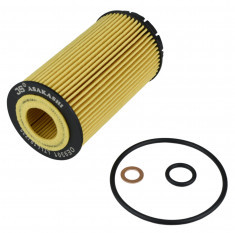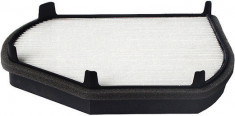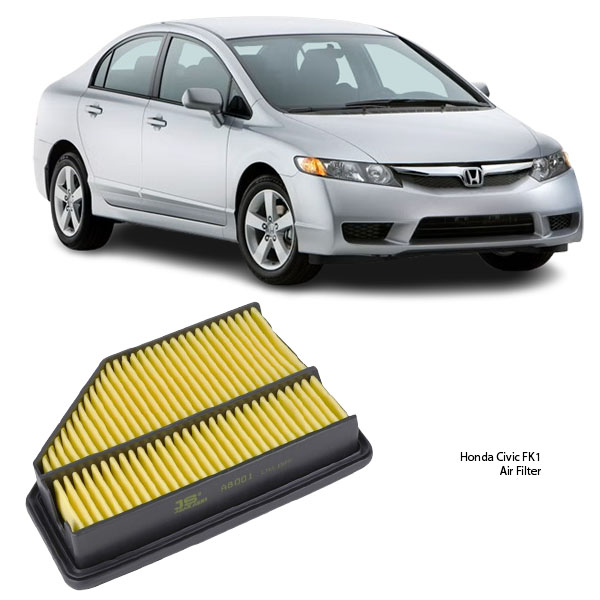-20%
Get Honda Civic FK1 Air Filter Assy A8001 in Kenya
An air filter assembly is a critical component of a vehicle’s air intake system, responsible for ensuring clean airflow into the engine. It protects the engine from dust, dirt, debris, and contaminants, helping to improve performance, fuel efficiency, and longevity. This article provides an in-depth explanation of the air filter assembly, its functions, types, benefits, signs of failure, maintenance tips, and replacement guidelines.
1. What is an Air Filter Assembly?
An air filter assembly consists of several interconnected parts that work together to filter air before it enters the engine. It is housed within a casing designed to direct and optimize airflow while preventing contaminants from entering the combustion chamber.
The primary components of an air filter assembly include:
- Air Filter Element – The core filtering material, made of paper, foam, or cotton.
- Filter Housing – A plastic or metal enclosure that holds the filter securely.
- Air Intake Duct – Channels air into the filter from the external environment.
- Mass Airflow Sensor (in modern cars) – Measures the amount of air entering the engine for proper fuel-air mixture adjustment.
2. Functions of an Air Filter Assembly
2.1 Filtering Contaminants
The primary function of the air filter assembly is to remove airborne particles such as dust, pollen, sand, and debris. This ensures that only clean air reaches the engine, preventing internal damage.
2.2 Enhancing Engine Performance
A clean air filter promotes proper combustion by allowing the right amount of air into the engine. This leads to better throttle response and efficient fuel burn, improving power output.
2.3 Protecting Internal Engine Components
Engines rely on a precise air-fuel mixture for optimal operation. Contaminants can cause premature wear on components like the piston rings, cylinders, and valves. A properly functioning air filter assembly prevents these particles from entering the engine.
2.4 Optimizing Fuel Efficiency
A clogged or dirty air filter restricts airflow, causing the engine to compensate by burning more fuel. A clean air filter ensures the correct air-fuel ratio, leading to better fuel economy.
2.5 Reducing Emissions
An inefficient air filter can cause incomplete combustion, leading to increased carbon deposits and higher emissions. By allowing adequate airflow, the air filter assembly contributes to a cleaner exhaust output.
3. Types of Air Filter Assemblies
3.1 Paper Air Filters
- Made from pleated paper material.
- Affordable and disposable.
- Offers excellent filtration but needs regular replacement.
3.2 Foam Air Filters
- Made from polyurethane foam, often oiled for better filtration.
- Used in off-road vehicles and motorcycles.
- Reusable and washable but requires frequent maintenance.
3.3 Cotton Gauze Air Filters
- Made from multiple layers of cotton gauze.
- High airflow capacity and reusable after cleaning.
- Common in performance and racing applications.
3.4 Carbon-Activated Air Filters
- Infused with activated carbon for odor and gas absorption.
- Used in high-performance and environmental applications.
4. Signs of a Failing Air Filter Assembly
4.1 Decreased Fuel Efficiency
A dirty air filter can restrict airflow, causing an imbalance in the air-fuel mixture, leading to increased fuel consumption.
4.2 Poor Acceleration & Engine Performance
A clogged air filter limits airflow, resulting in sluggish acceleration and reduced power output.
4.3 Black Smoke from Exhaust
Insufficient air supply can cause incomplete combustion, leading to excess fuel burning and producing black smoke.
4.4 Unusual Engine Noises
A blocked air filter can disrupt the engine’s air intake, leading to irregular noises like coughing, popping, or sputtering.
4.5 Strong Fuel Smell
Restricted airflow can cause unburned fuel to exit through the exhaust, leading to a noticeable fuel odor.
4.6 Check Engine Light
In modern vehicles, a dirty air filter may trigger the check engine light due to improper air-fuel ratios detected by the sensors.
5. Maintenance Tips for an Air Filter Assembly
5.1 Regular Inspection
- Inspect the air filter every 10,000–15,000 kilometers or as recommended by the manufacturer.
- Check for dirt buildup, cracks, or deformities in the filter element.
5.2 Cleaning or Replacing the Filter
- Paper Filters – Replace every 15,000–30,000 kilometers depending on driving conditions.
- Foam or Cotton Filters – Clean and oil every 10,000 kilometers for continued performance.
5.3 Avoiding Dusty or Polluted Areas
If driving in off-road or dusty environments, inspect and replace the filter more frequently to maintain efficiency.
5.4 Ensuring Proper Installation
A poorly fitted air filter can allow unfiltered air to bypass the filter element, causing engine damage. Always ensure the filter is securely placed within the housing.
5.5 Checking Air Intake Ducts
Inspect the intake duct for cracks, leaks, or blockages that could compromise airflow.
6. Replacing the Air Filter Assembly
6.1 When to Replace the Assembly?
- If the filter housing is cracked or damaged.
- If the filter does not fit securely due to wear and tear.
- If airflow remains restricted despite changing the filter.
6.2 Steps to Replace an Air Filter Assembly
- Locate the Assembly – Found near the engine bay, connected to the intake duct.
- Open the Housing – Unclip or unscrew the housing cover.
- Remove the Old Filter – Take out the clogged or dirty filter.
- Clean the Housing – Remove any dust or debris from the housing before installing the new filter.
- Install the New Filter – Ensure the filter sits properly inside the housing.
- Close the Housing – Secure it with clips or screws and double-check for leaks.
7. Benefits of a Well-Maintained Air Filter Assembly
7.1 Extended Engine Life
By preventing contaminants from entering the engine, a clean air filter reduces wear and tear on critical components.
7.2 Improved Fuel Economy
A fresh air filter ensures optimal airflow, leading to efficient fuel combustion and better mileage.
7.3 Lower Emissions
Ensuring proper air intake leads to cleaner combustion, reducing harmful pollutants.
7.4 Enhanced Vehicle Performance
Proper airflow contributes to better acceleration, throttle response, and overall engine power.
7.5 Cost Savings on Repairs
Replacing an air filter is a simple, inexpensive maintenance task that prevents costly engine damage in the long run.
8. Conclusion
The air filter assembly plays a crucial role in maintaining engine efficiency, fuel economy, and longevity. Regular inspection and timely replacement of the air filter ensure optimal performance and protect the engine from damage. Whether you’re driving in the city, on highways, or off-road, keeping your air filter in top condition is essential for a smooth and trouble-free driving experience.
Follow us on Facebook for more parts.



